When it comes to phones sold, Samsung is the undisputed king of the Australian Android market, and the company’s Galaxy S line of devices has been setting or chasing the pace for top tier Android phones for a decade.
It’s no surprise that the release of a new Galaxy S device is an important marker on the Android hardware calendar. That’s never been truer than this year with the release of not one but three separate Galaxy S10 devices (and a 5G one coming soon).
The Samsung Galaxy S10, S10+ and the S10e were all released in February in New York, with Samsung trying to have a model of the Galaxy S10 for everyone, or at least anyone willing to spend $1,197 or more on a phone.
We’ve had a Galaxy S10+ for a few weeks now and given it the Full Monty. So how did it stack up? While you try and lose the Full Monty mental imagery, I’ll tell you this – the S10+ is undoubtedly the best Samsung phone you can buy today, bar none.
WHAT’S INSIDE?
Depending on the region the Galaxy S10+ ships with either a Snapdragon 855 or the new Exynos 9820. Being the international variant our devices has the Exynos 9820 8nm Octa-core processor with a top clock speed of 2.73 GHz. This is Samsung’s best in class processor with onboard AI, Cat 20 LTE modem, 8K Video capture and much more, and it shows.
The core configuration includes 2 custom Samsung cores for high performance, 2 A75 cores clocked for medium performance, and 4 A55 cores clocked for power-efficient performance. This new ‘tri-cluster’ design is becoming more popular in high-end chips allowing for intelligent task scheduling across the cores.
This is supported by 8GB of RAM, 128 GB of internal storage and optional MicroSD up to 512GB. Rounding out the hardware package is a 6.4-inch Infinity O (hole punch design) 4K (3040×1440) AMOLED HDR 10+ display, a 4,100 mAh battery, triple rear cameras, dual front-facing cameras, in screen fingerprint scanner, dual front-facing stereo speakers, NFC, and of course a headphone jack!
Check out the full specs below.
| Key Specifications: | Samsung Galaxy S10+ |
|---|---|
| Release date | March 219 |
| Screen size | 6.4-inch |
| Screen technology | AMOLED |
| Resolution | 3,040 x 1,440 |
| PPI | 522 |
| Rear camera |
|
| Rear aperture |
|
| Front camera |
|
| Front aperture |
|
| Chipset | Exynos 9820 |
| Core config | 2x 2x 4x |
| RAM | 8GB |
| Storage | 128GB/512GB/1TB |
| MicroSD | Yes, up to 512GB |
| Battery | 4,100 mAh |
| Battery removable | — |
| Connector | USB C |
| Headphone Port | Yes |
| Headphone Location | Bottom |
| Speaker Configuration | Stereo |
| WIFI standards | 802.11 a/b/g/n/ac/ax |
| Bluetooth standards |
|
| NFC | Yes |
| Location |
|
| Android OS | Android 9.0 |
| Vendor skin | One UI |
| Dimensions | 157.6 x 74.1 x 7.8 mm |
| Weight | 175g |
| Colours |
|
The Galaxy S10+ is an objectively beautify device, it’s smooth, sleek and tall design is offset with precision build quality, a light hand feel and a now familiar Samsung Galaxy curved design. I do miss the rear fingerprint sensor, but that’s due to habit more than the performance of this device.
I’m not a fan of the notch, nor am I a real fan of the Infinity O camera cut out. If I had to choose one I do find the cutout is less infuriating, and I was never driven to turn on the “black bar” to hide it, so I guess I prefer a cut-out…
The display is gorgeous in its own right, with brilliant colours, dark blacks, excellent contrast, or in other words a top of the line Samsung AMOLED.
WHAT’S IT GOOD AT?
Androiding, the S10+ is fantastic at Androiding. I have to admit that the Samsung One UI while still a heavily modified skin of Stock Android feels more congruent with both itself and the overall Android ecosystem. While I wouldn’t call it a stock + experience, I would call it an Android + experience.
That’s a big deal for Samsung who have traditionally come under fire for a confusing and at times unappealing software experience. One UI is sleek, modern and appropriate, it nicely bridges the divide between traditional Samsung and traditional Android.
One UI isn’t a light touch however, while it may now be consistent, Samsung’s software offers a complete management layer, often in addition to base Android. You’ll find system functionality duplicated everywhere from Assistant/ Bixby, to phone back up, to “find my phone” functionality and lots more. Samsung provides essentially an entire services layer on top of the Google services layer then tries to serve those to you instead of Google’s.
I’m so used to stock that I definitely noticed the duplication, but for a regular Samsung user experience is likely familiar, but I do worry that these Samsung services do act as a walled garden for platform lock-in. Of course Samsung wants to both makes things easier for users and of course keep them within their ecosystem going forward.
Moving beyond the background services, menus etc the S10+ just performed. I spend a lot of time playing with the mid-range devices, always on the search for the perfect price: performance device, but when you use something like the S10+ you can see the difference top tier phones make.
Overall the Galaxy S10+ is a fantastic device to experience Android on, it’s modified here and there, there are a little duplication and Samsung services I wish weren’t there, but that luckily doesn’t detract from the overall device quality or experience.
The S10 does hold the distinction of being the first Samsung device with an in-display fingerprint scanner. The ultrasonic sensor has come under fire from some for being slower and less accurate than its competitors.
What I found is that the sensor was very accurate when I knew where it was. In other words when the display was on and the little fingerprint icon appeared it was fast and accurate. However, from screen off, I still haven’t got the exact location down.
I often don’t unlock the phone and need to power cycle the screen to get my finger in the right place. I think over time this is something I’d get better at, I’ve already noticed a reduction in failures to find the right spot!
The Cameras
A fantastic camera is table stakes for flagship devices these days, and what makes a camera fantastic is a little different for all of us. Some people want the curated just click experience like the Pixel that has 1 camera and you just mash the button and the phone does the rest.
Others want the in-depth experience with multiple lenses, Manual modes and all the bells and whistles. Lately I’ve settled in between. I Like the functionality of multiple lenses, especially for lossless zoom, but I want to simply of mashing the button and getting some computational photography genius added post shot.
The Samsung delivers on the multiple lenses, with triple camera set up on the Galaxy S10+ including a wider angle, standard frame and 2x lossless zoom. For you manual mode nerds you’ll find that just a swipe away.
In full light the Galaxy S10+ is capable of grabbing some spectacular images. I did notice that there doesn’t seem to be as much computational magic going one, with a slightly higher percentage of ‘missed shots’ with the S10+. That’s not to say the S10+ wasn’t reliable in good lighting, just it missed a few more shots than say the Pixel or Mate 20.
Unfortunately the same can not be said for night photography. I’m long maintained that I personally don’t expect small sensors to perform well in the dark. That hasn’t stopped many OEMs in making that happen anyway, and with Night Sight on the Pixel line there’s already good performers for low light photography on the market.
Samsung’s experience is simply not as good, The images were grainy and less defined than the competition. It still performs ‘well’ in low light, it just can’t compete with other top tier devices of the past 12 months.
Here are a few samples from the Galaxy S10+
and a few more
Performance
As previously discussed the Galaxy 10+ is a solid performer with no signs of lag, even ‘bad apps’ seem to respond quicker than I’m used to. The combination of the Exynos 9820 and 8GB RAM along with perhaps a lighter “under the hood” approach to One UI has coalesced into a fast and fluent Android experience.
There are some advantages to going with hardware form the big players, things like reliable Bluetooth performance for instance. Bluetooth is a hit and miss technology at best, but I have found having a good main devices makes a big difference. Bluetooth on the Galaxy S10+ is Bluetooth at its best.
Battery life is an intensely personal issue, and always comes down to your use and charging habits. For me The GalaxyS10+ never ‘ran out of battery’ but I could tell it didn’t perform as well as other devices I’ve used.
Overall compared to other Ausdroiders I have a relatively low screen time per day 2 – 3 hours max on most normal days, additionally, I charge my phone for 40 minutes twice a day driving to and from work, thanks to Android Auto. That said I would notice most evenings that my battery would be around 40 %.
40% is decent at the end of a long day, but there were 2 top ups in there, so overall I wasn’t impressed by battery life, but it wasn’t an issue for me either, I did have a couple of long days away from the house, and car top ups aside it did last me until I got home, I’d worry if you were a 16 hour party rager with high screen on time.
Charging is a joy on the GalaxyS10 line, with super fast charging over USB C, wireless charging with Qi and the introduction to Samsung of reverse wireless charging the Galaxy S10 was easy to keep full.
Unfortunately I don’t have any other Qi devices at the moment so I wasn’t able to test the Qi Power Sharing, hopefully, I’ll get some Galaxy Buds soon and test that out then! Still, it’s a nice addition to the feature set.
WHAT’S IT LESS GOOD AT?
With a phone that starts at $1,499 AUD you wouldn’t expect to find much in a “what it’s less good at” section of a review, and for the most part with the Galaxy S10+ you’d be right. The hardware, performance, camera and even software are all strong.
We’ve previously mentioned the camera as not quite being on a par with the current competition, so comparatively it feels a little behind, but it’s still objectively a great camera, except maybe in low light situations.
Something that’s worthy of mentioning is the insecurity of face unlock. As we discovered during our review the Galaxy S10 can be fooled to unlock with a video of your face. Not ideal really, but also very preventable.
If Samsung had not included a fingerprint sensor, and the face detection was insecure the S10 would be DOA. BUT, it does have a fingerprint sensor, and one you do get better at using over time, so simply don’t activate face unlock and you’ll be safe and secure whilst still having fast biometric access.
Many of the other elements of the Galaxy S10+ that I might claim are not as good are more personal choice issues/ familiarity. But with a little Nova Launcher here and a bit of Gboard there, and an app to remap Bixby to the Google Assistant your winning, tiger blood style!
Bixby deserves a special mention here. Look it’s fine for what it is, and in my opinion, is voice guidance for the device. Under that context, it’s actually better than the Google Assistant. Samsung has taken the time to map pretty much all of the device functionality to Bixby meaning you can voice control the hell out of this sucker.
However, the minute you want to leave the device or query the interwebs it just can’t hold a candle to the Assistant. Intentionally disabling the ability to use Assistant, Alexa or Cortana via the hardware button is boarding on consumer hostile in my book.
Samsung if your assistant was better people might use it, at least let people map one of the other assistants to the alternate button configuration rather than having to use a hacky 3rd party app to regain user choice of a device they shelled out almost $1500 for…..
CONCLUSION
I’ve long wanted to return to a Samsung device, they do help set the pace for Android, and it’s important to check in with them every now and then. I can’t think of a better device than the Galaxy S10+ to get back into it.
Samsung knows how to build hardware, and every element of this device is intentional, there are no mistakes, nothing overlooked, if you don’t like it, it’s not because they got it wrong, it’s because you don’t agree with a decision. For the record removing the headphone jack WOULD be wrong!
That’s not to say that the Galaxy S10 line is perfect, nothing ever could be. Transport this phone back even 3 years and people would absolutely freak out at it. We sometimes forget the breakneck pace of consumer mobile technology, and in doing so dismiss the incremental as boring.
If you’ve ever climbed the great wall of China you’d know, there’s only one way to do it, step by step. Mobiles are in that space now. We’re not going to have revolutionary device every year, we’re on an evolutionary time scale now.
Who should buy a Samsung S10 device? Honestly, anyone who wants to (and can afford to) spend the money. If you’re already in the Samsung world this is the best phone they’ve ever made. If you’re an average consumer who wants one of the best phones, the Galaxy S10 has to at least make your list.
Honestly, the only people who shouldn’t buy it is the person who already doesn’t want to. You, the person who for whatever reason doesn’t want the S10+, you don’t have to buy it. There’s a lot of choice in the Android market, even at the flagship levels there are a few phones fighting for dominance.
The Samsung Galaxy S10+ is selling for $1,499 AUD from various retail outlets or on contract from basically everyone in Australia.




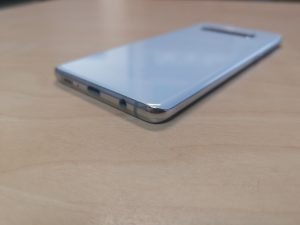
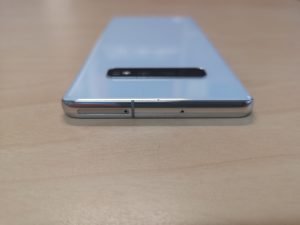
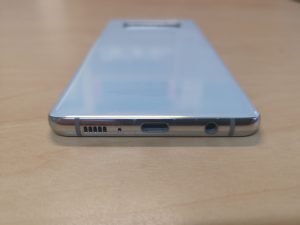



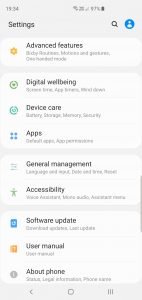

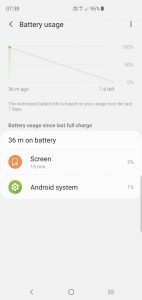















“But with a little Nova Launcher here and a bit of Gboard there, and an app to remap Bixby to the Google Assistant your winning, tiger blood style!”
You’re not your
A shame you didn’t discuss the glass vs ceramic options.